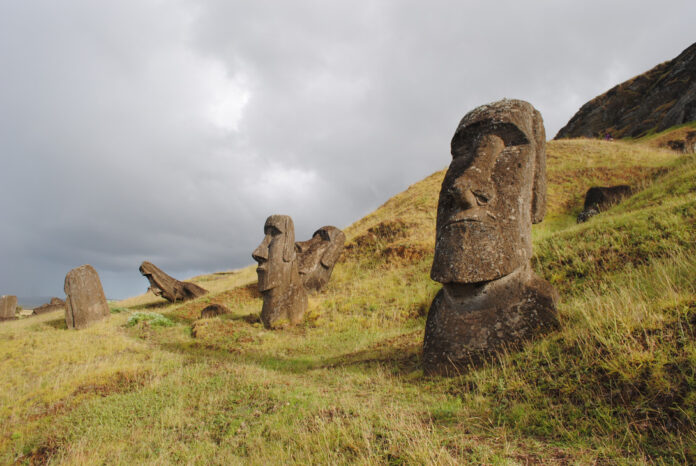A fully unearthed Moai statue on Easter Island.
The Easter Island statues are iconic monolithic human figures carved by the Rapa Nui people on Easter Island in eastern Polynesia between 1250 AD and 1500 AD. Believed to represent ancestors, they were placed on ceremonial platforms called Ahu. The construction and transportation of these massive statues, some weighing up to 80 tons, continue to fascinate researchers, given the island’s remote location and the impressive engineering feats involved.
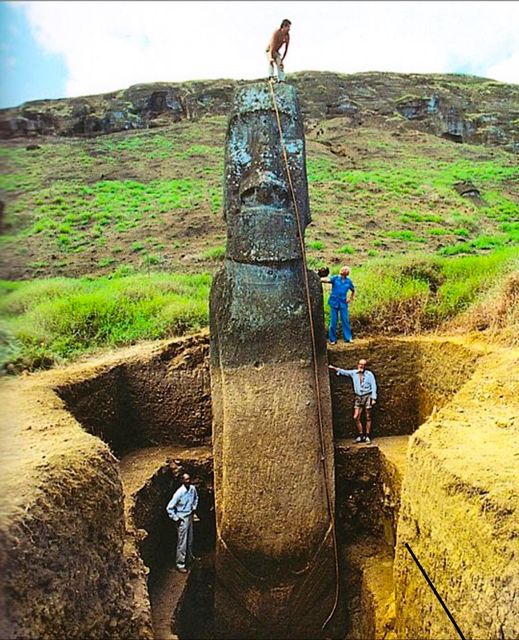
Once upon a time, on a small isolated island in the middle of the ocean called Easter Island, or Rapa Nui, lived an indigenous people with unique customs and traditions. What made this island famous worldwide were the giant stone statues known as Moai.
Around 1400 to 1650 AD, the people of Rapa Nui began building the Moai statues to honor chieftains or other important individuals who had passed away. These statues were placed on rectangular stone platforms called “ahu,” which served as tombs for the individuals they represented. Interestingly, the Moai statues are not just giant heads as many people mistakenly believe. In fact, they have full bodies, partially buried by soil and rocks in the area of the Rano Raraku volcano.

There are about 1000 Moai statues on the island, weighing up to 86 tons and standing up to 10 meters tall, although the average size is about half of that. Approximately 95% of the statues were carved from the Rano Raraku volcano, which contains a type of rock called tuff – compressed volcanic ash that is easy to carve. Since the Rapa Nui people did not have metal to work with, they used simple stone tools called toki.
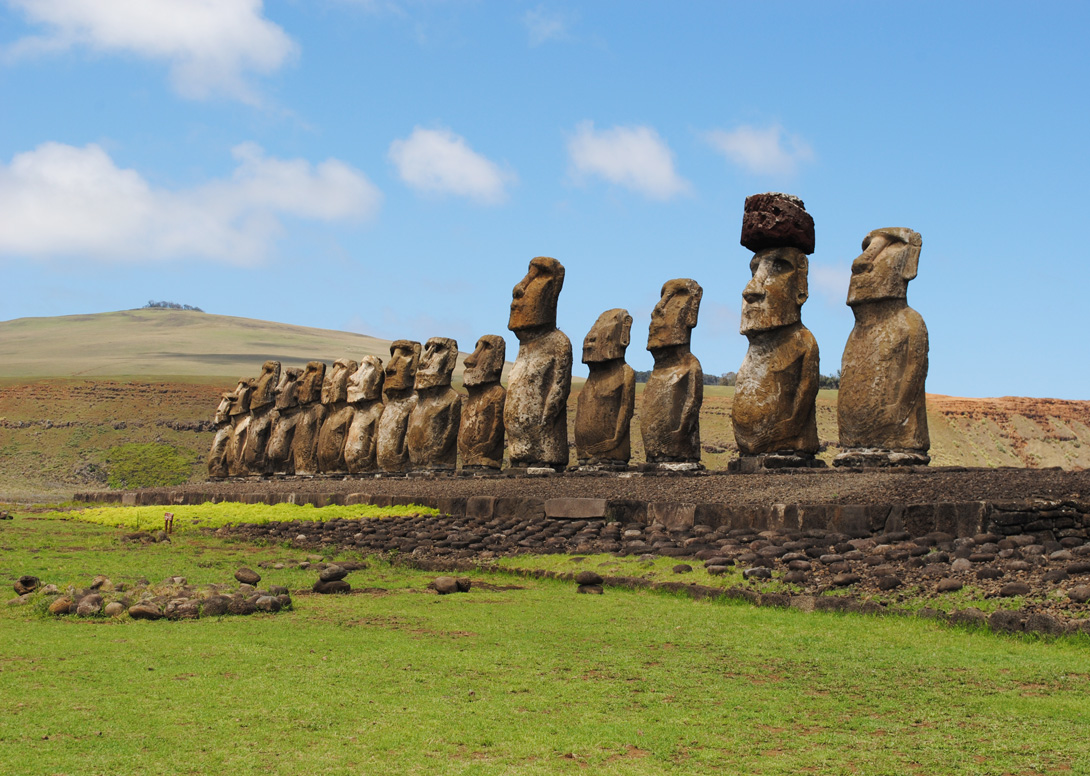
The Moai statues were carved to retain the features of the person they represented. A specialized group of carvers created these statues, and other tribes on the island would purchase them through bartering goods such as sweet potatoes, chickens, bananas, mats, and obsidian tools. The larger the statue, the higher the cost, symbolizing the tribe’s intelligence and diligence in acquiring it.
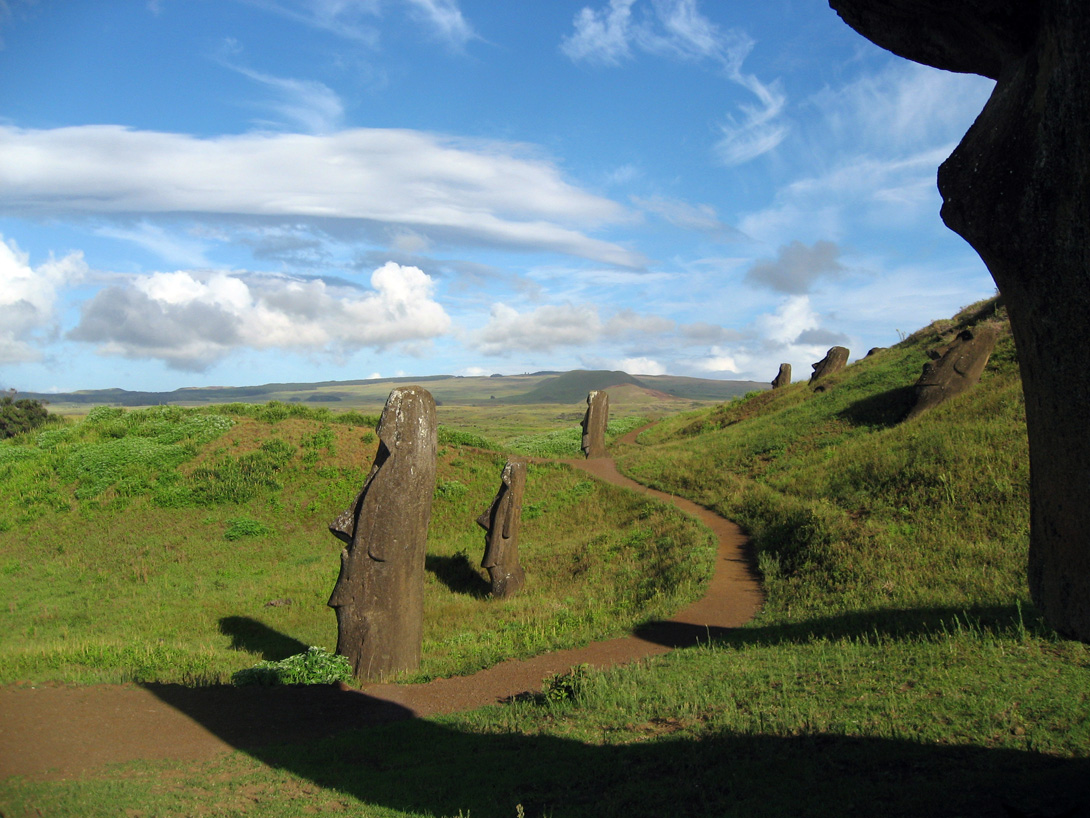
Once the statues were completed and transported to their destinations, the eye sockets were carved. Occasionally, a red scoria stone hat from the Puna Pau quarry was placed on the statue’s head to represent the long hair of the deceased, a symbol of spiritual power (mana). Coral eyes were the final touch, transforming the statue into an “ariŋa ora” or “living face.” The spirit of the deceased would forever watch over the tribe, bringing fortune and protection.
However, by the 18th century, when the first European ship arrived at Easter Island, all the Moai statues were still standing. Over time, many statues were toppled, and by the late 19th century, none were left standing. The most common explanation is that the statues were overthrown during tribal wars to humiliate the enemy. Evidence supporting this theory includes the fact that most statues were found face-down in the earth.
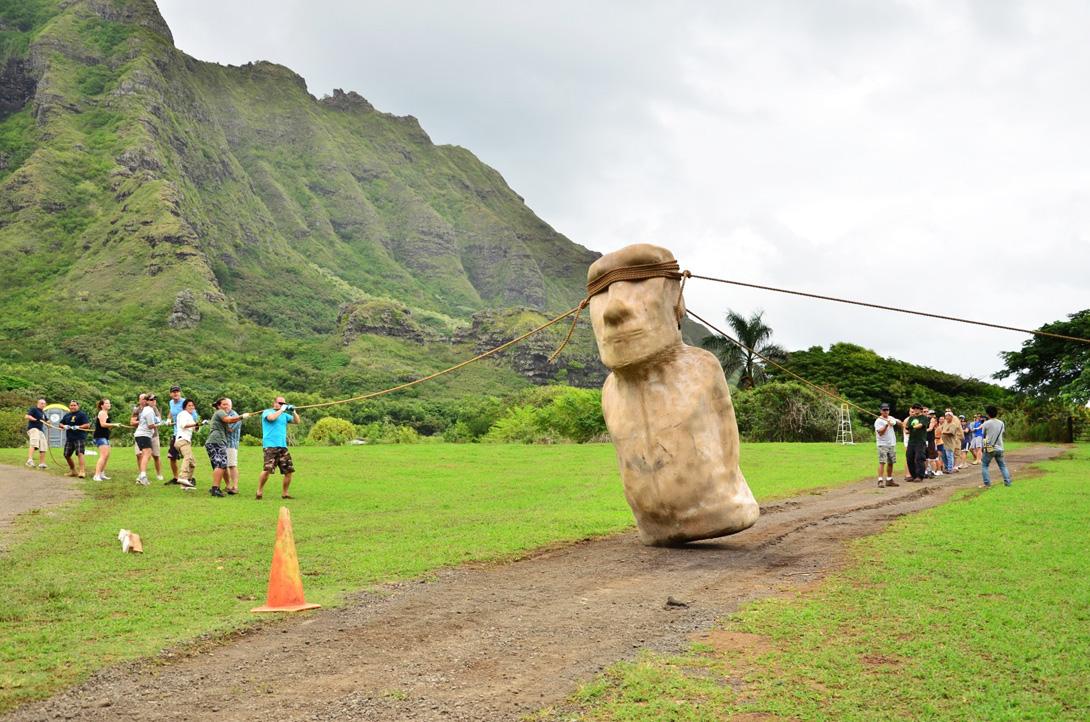
Another legend tells of a woman named Nuahine Pīkea ‘Uri, who possessed strong mana powers and caused the statues to fall in anger when her four children left her with nothing to eat. Some Easter Island elders still believe this story to be true.
The tools used to carve the Moai statues are called toki, simple handheld chisels. Countless toki have been found in excavations at Rano Raraku, especially around the statues. The highest quality toki were made from hawaiite, the hardest type of rock on Easter Island. Hawaiite was only found in one place on the island, at the Rua Toki-Toki quarry south of Ovahe on the north side of Rapa Nui. Its rarity, combined with its use in carving Moai statues, made it highly valuable in ancient times.
And so, the story of the giant Moai statues is not just about their grandeur but also about the respect and love the Rapa Nui people had for their ancestors. The Moai stand as silent witnesses to a bygone civilization, forever watching over and protecting the island and its people.



